Figures & data
Figure 1. Survival curves for diploid yeast cells of Saccharomyces cerevisiae, strain XS800. Cells were exposed to a sequential treatment with ionizing radiation (60Co γ-ray, 2 Gy/min) and hyperthermia (50°C) and the reverse order of these agents. Different lines are labelled with the duration of heat exposure (hours).
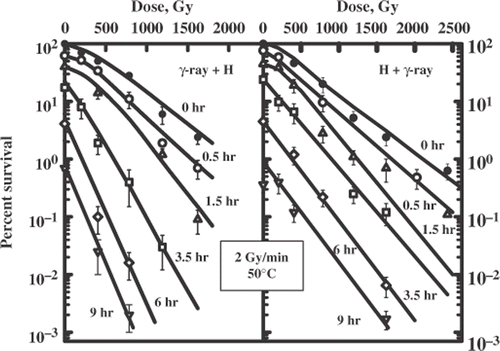
Figure 2. The dependence of the thermal enhancement ratio on the duration of heat exposure (50°C) after the sequential action of ionizing radiation (60Co γ-rays) and hyperthermia on diploid yeast cells.
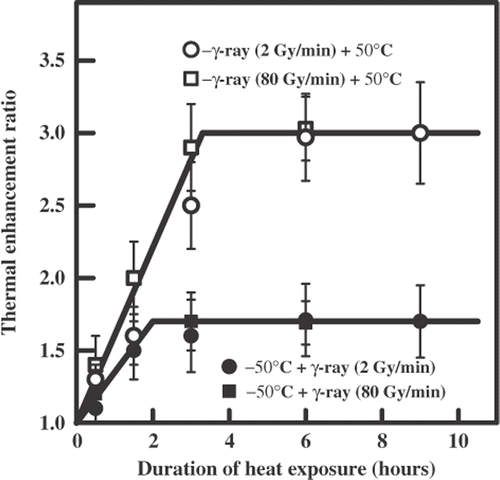
Figure 3. Survival curves for diploid yeast cells exposed to a sequential treatment with ionizing radiation (60Co γ-ray, 80 Gy/min) and hyperthermia (50°C) and the reverse order of these agents. Different lines are labelled with the duration of heat exposure (hours).
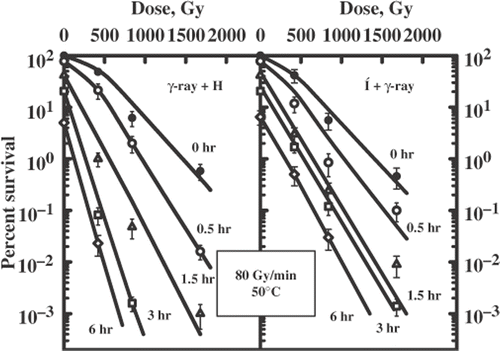
Figure 4. Survival curves for diploid yeast cells exposed to a sequential treatment with ionizing radiation (60Co γ-ray, 2 Gy/min) and hyperthermia (58°C) and the reverse order of these agents. Different lines are labelled with the duration of heat exposure (minutes).
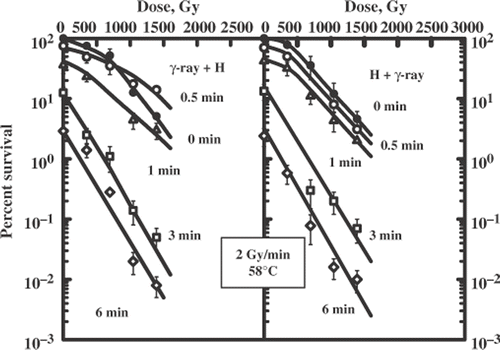
Figure 5. The dependence of the thermal enhancement ratio on the duration of heat exposure (58°C) after the sequential action of ionizing radiation (60Co γ-rays) and hyperthermia on diploid yeast cells.
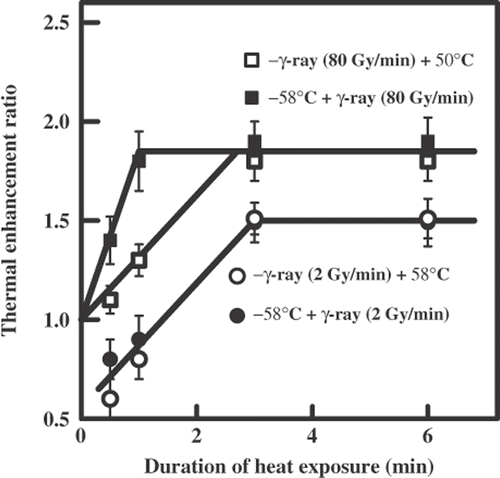
Figure 6. Survival curves for diploid yeast cells exposed to a sequential treatment with ionizing radiation (60Co γ-ray, 80 Gy/min) and hyperthermia (58°C) and the reverse order of these agents. Different lines are labelled with the duration of heat exposure (minutes).
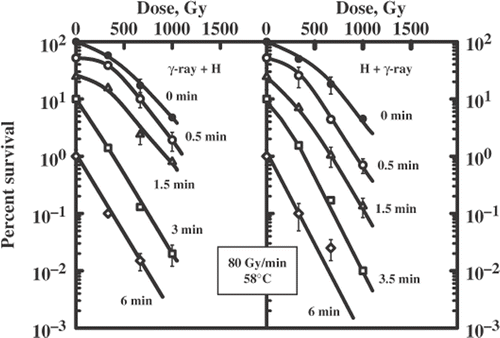
Table I. The dependence of the basic model parameters (p1, p2) and the greatest TER after different conditions of the sequential action of ionizing radiation (γ-rays) and hyperthermia (H).